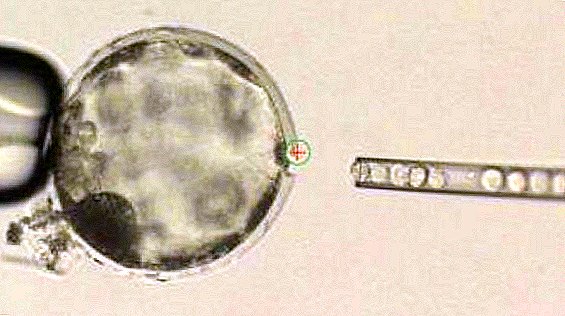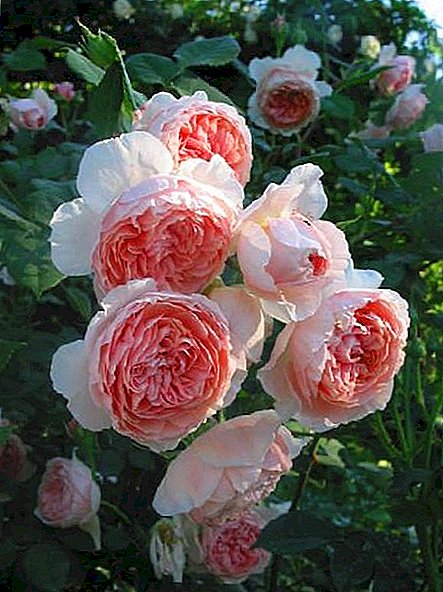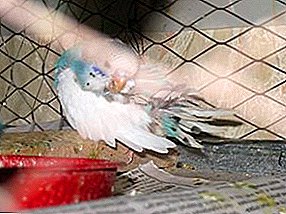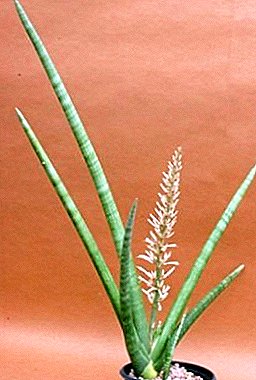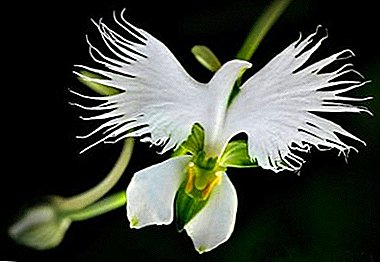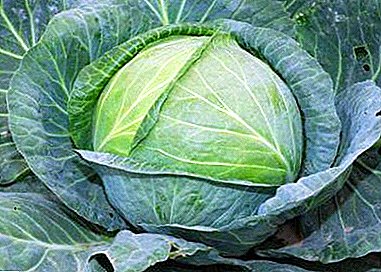
Novice gardeners are wary of growing cabbage, because they believe that this process requires special skills.
Just a few decades ago, it was like that, but every year more and more new varieties of crops appear that require much less attention and are highly resistant to the effects of diseases and pests. Atriya cabbage is one of such varieties.
In this article, you will learn how to plant and grow this type of cabbage correctly, as well as how to save the resulting crop.
Variety description
Cabbage is characterized by high endurance, excellent presentation and safety up to six months.
A head of cabbage has a blue-green color and rounded shape, rather dense. At the cut there is a small semi-raised socket.
The average weight of the head varies from 4 to 8 kg. Its leaves are medium in size, wide. On them there is almost no blistering, waviness, no notched edges.
History of
Atria F1 hybrid cabbage variety was developed by Dutch breeders. And in 1994, the variety was included in the state register of the Russian Federation.
What is the difference from other species?
Among a large number of types of cabbage, hybrid variety "Atria" is distinguished by a high level of yield and simplicity in the care. With long-term storage, the variety becomes juicier, which is why the cabbage taste only improves.
Also A distinctive feature is the rapid growth and compactness of the plant., and thanks to breeding work, the variety became resistant to diseases such as fusarium and gray mold.
The advantages and disadvantages of F1 hybrid
This variety is able to attract attention of both ordinary summer residents and farmers who are professionally engaged in growing vegetables for sale.
 And all because he has an impressive list of advantages:
And all because he has an impressive list of advantages:
- mature cabbages are highly resistant to cracking;
- low susceptibility to disease;
- high yields;
- good taste;
- synchronous ripening of seeds planted at the same time;
- high density outlet at the time of technical maturity.
But there are several drawbacks:
- high need for watering;
- after watering, the plant needs hilling and loosening the soil;
- for planting seeds, a spacious and unencrypted area is required.
Step-by-step instructions for care and landing
The variety of cabbage "Atria" is grown in two ways: planting finished seedlings and sowing seeds directly on the beds. The first method is used mainly in the northern regions, and the second - in the south.
In order to get a large amount of crop varieties of cabbage "Atria", you need to pay attention to the following manipulations:
- Buying seeds. Seeds can be easily ordered in many online stores directly for home delivery, in such cases, the cost of 2.5 thousand seeds will be from 1 500 rubles; 20 seeds will cost about 25 rubles. In large cities, seeds can be purchased at specialty stores and farmers markets.
- Landing time. The most suitable time for sowing seeds is April. From May 10 to May 20, when the soil is already sufficiently heated, planting occurs on the plot. But before embarking on this process, the seeds must undergo several procedures: hardening and checking for germination.
- Choosing a landing site. For planting cabbage varieties "Atrii" most suitable light and open areas, with a smooth and fertile soil. If the climate is cold, then cabbage is best grown in the greenhouse.
- The soil. Due to the fact that the hybrid uses a large number of different minerals and other nutrients, the soil must be fertile and well fertilized. The ideal option is chernozem.
 Landing. Competent planting plants - is the key to a good harvest, which is why, when planting cabbage, you need to follow certain rules. The distance between the rows should be 60 cm, and the intervals between seedlings from 30 to 35 cm. It is best to plant in cloudy weather or after 15 hours if the weather is hot. Seedlings should be deepened to the bottom sheets. In the early days, the plant should be covered from the sun so that it does not get burned. During the week, seedlings need to be sprayed with water two or three times a day.
Landing. Competent planting plants - is the key to a good harvest, which is why, when planting cabbage, you need to follow certain rules. The distance between the rows should be 60 cm, and the intervals between seedlings from 30 to 35 cm. It is best to plant in cloudy weather or after 15 hours if the weather is hot. Seedlings should be deepened to the bottom sheets. In the early days, the plant should be covered from the sun so that it does not get burned. During the week, seedlings need to be sprayed with water two or three times a day.- Temperature. The minimum growth temperature of cabbage is 7 degrees. The maximum temperature is 20 degrees. The optimum temperature for growing recognized rate from 15 to 18 degrees.
- Watering. At first, watering cabbage is carried out every 2-3 days, 8 liters of water per 1 m². After 14 days, the number of waterings is reduced to 1 time per week, while consuming 13 liters per 1 m². Water temperature should not be below + 18 ° С. The greatest attention should be paid to the process in August, when a head is formed.
- Top dressing. In total, top dressing cabbage varieties "Atria" is carried out four times.
- 20 days after landing. Two tablespoons of "Effecta" per 10 liters of water (0.5 liters of solution per 1 sapling).
- 10 days after the first application. One tablespoon of "Kemira" per 10 liters of water (1 liter of solution per 1 sapling).
- In June. 20 g of potassium sulfate and 18 g of superphosphate per 10 liters of water (5-6 liters of solution per 1 m²).
- In August, 3 weeks before harvest. 15 g of "Nitrophoska" per 10 l of water (5-6 l of solution per 1 m²).
In order not to burn the roots of the plant, top dressing should occur after watering, on wet ground.
- Other vegetable care measures. After 21 days after planting the cabbage on the bed, you need to hold the first hilling, after another two weeks, the procedure is repeated. Weeds are removed and the soil is loosened before and after watering. Frequent loosening of the soil is necessary for aeration of the roots, this process increases the air supply to the plant.
- Harvesting. It is carried out at the end of August. If the cabbage is cut, then use a sharp knife. Cutting the head, leave about 5 cm of the fruit stem and immediately get rid of the lower leaves. After harvesting, heads of cabbage are not folded onto the ground, but onto a film prepared for them. In the case of digging cabbage roots are cleared from the ground, and also removed the lower leaves. Heads are laid out to give the roots to dry.
Crop storage
It is best to store vegetables in the basement, cellar or any other cool and dark room. The most suitable way to store is to hang cabbage from a previously cleaned root.. Storage temperature is about 4 degrees.
Diseases and pests
 Perhaps the most common pests of cabbage in this class are slugs. These pests are attracted by moist and cool soil, so well suited for their reproduction. For prevention against slugs, ash is suitable, which, in addition to this, is also a plant food. It is applied once a week after rain or watering, when the leaves are still wet. If there are chickens or ducks in the area, they will also do their job well and help get rid of pests.
Perhaps the most common pests of cabbage in this class are slugs. These pests are attracted by moist and cool soil, so well suited for their reproduction. For prevention against slugs, ash is suitable, which, in addition to this, is also a plant food. It is applied once a week after rain or watering, when the leaves are still wet. If there are chickens or ducks in the area, they will also do their job well and help get rid of pests.
Among insects, the main pest is cabbage aphid.that feeds on plant sap. Since she does not like harsh smells, you can plant garlic next to cabbage for prevention. In order to destroy aphids use "Spark".
Prevention of various problems
And, finally, in order to protect oneself from the occurrence of problems during the cultivation of Atriya cabbage, some things should be taken into account:
- it is necessary to inspect the beds for the presence of pests or disease;
- cabbage planted with seeds needs more attentive care;
- despite the resistance of the variety to certain diseases, it is necessary to treat twice a season in order to prevent it;
- It is recommended to remove the remains of plants from the ground.
By planting this variety even in a small area, with proper care, you can achieve a decent harvest and provide your family with a supply of vitamins for the whole winter. The variety has managed to deserve attention, both among novice gardeners and among professional farmers. After all cultivation of cabbage varieties "Atria" does not require much time and effort.


 Landing. Competent planting plants - is the key to a good harvest, which is why, when planting cabbage, you need to follow certain rules. The distance between the rows should be 60 cm, and the intervals between seedlings from 30 to 35 cm. It is best to plant in cloudy weather or after 15 hours if the weather is hot. Seedlings should be deepened to the bottom sheets. In the early days, the plant should be covered from the sun so that it does not get burned. During the week, seedlings need to be sprayed with water two or three times a day.
Landing. Competent planting plants - is the key to a good harvest, which is why, when planting cabbage, you need to follow certain rules. The distance between the rows should be 60 cm, and the intervals between seedlings from 30 to 35 cm. It is best to plant in cloudy weather or after 15 hours if the weather is hot. Seedlings should be deepened to the bottom sheets. In the early days, the plant should be covered from the sun so that it does not get burned. During the week, seedlings need to be sprayed with water two or three times a day.